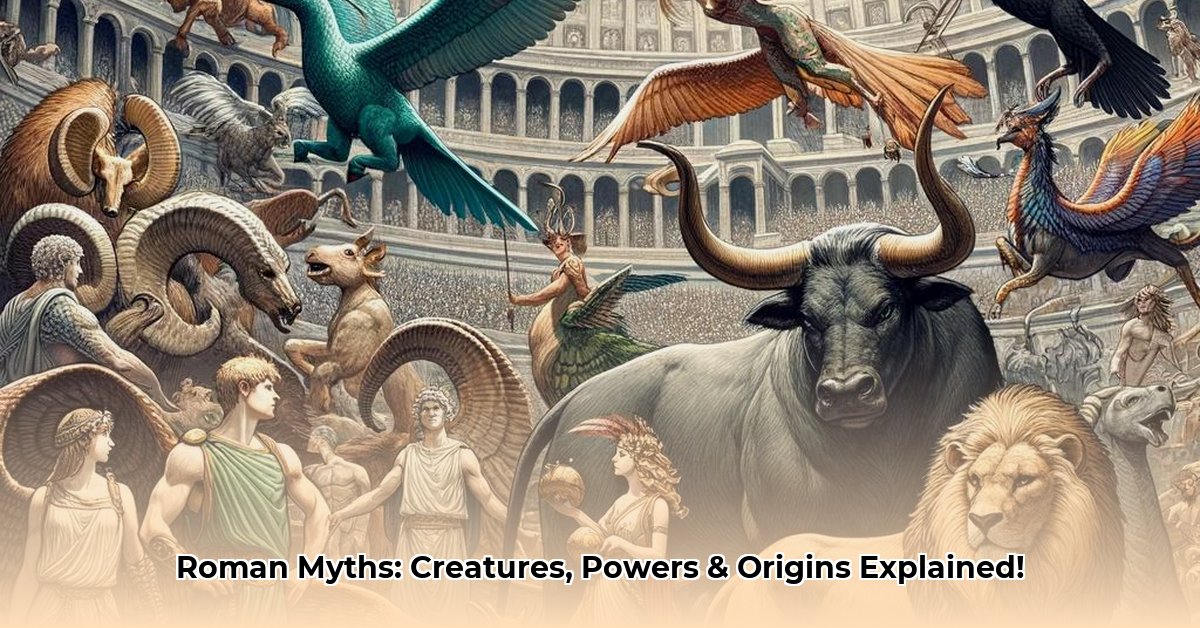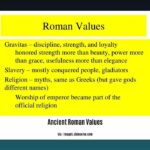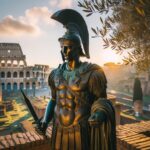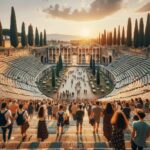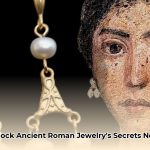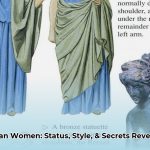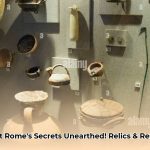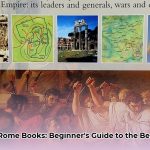Fascinated by ancient civilizations? Beyond its renowned emperors and pantheon of gods, the world of ancient Rome was richly populated by an array of captivating mythical creatures. These weren’t mere figments of imagination; they were integral to daily life, shaping Roman culture, beliefs, and narratives. From the intimate guardians of the Roman household to terrifying beasts challenging heroic figures, these beings offered a unique lens through which Romans understood their world. This guide delves into the myths, the enduring legacies, and the unique Roman adaptations of these fascinating entities, exploring how they mirrored societal values, anxieties, and the profound human connection to spirituality and the natural world. Learn about other Roman symbols in our linked guide.
Ancient Roman Mythical Creatures: Exploring Their Significance
Step into the captivating realm of ancient Roman mythical creatures, exploring the extraordinary figures that populated Roman myths, profoundly influenced their culture, and continue to spark our imaginations. We will uncover the legends, inherent powers, and origins of these beings in an accessible, engaging manner, moving beyond dry historical accounts to understand their profound cultural relevance.
Origins and Influences: The Tapestry of Roman Myth
Roman mythology, though often seen as heavily borrowing from Greek traditions, cultivated a distinct identity rooted in its indigenous Italic past and later shaped by expansive cultural exchange. This blend created a rich tapestry of mythological creatures unique to the Roman worldview.
While the Romans admired and emulated Greek civilization, adopting much of its pantheon and many mythical beings, they imbued these imports with their own pragmatic values and cultural nuances. The Minotaur, a human-headed bull, or the Centaur, a man-horse hybrid, both present in Greek myth, found new resonance in Roman tales of heroism and the conflict between civilization and wildness.
Beyond Greek influence, native Italic traditions, particularly from the Etruscans and the indigenous tribes of Latium, contributed unique beings to Rome’s folklore. The Lares and Penates, household spirits deeply ingrained in Roman daily life, exemplify these native roots, evolving distinctly from their Greek counterparts and becoming central to Roman familial and state religion. This fusion allowed Roman mythology to reflect both its imperial ambitions and its deep connection to the Italian land.
Household & Domestic Spirits: The Protectors of Home and Hearth
Imagine divine, unseen guardians observing every aspect of your household, extending protection and ensuring prosperity. This deeply personal form of divinity was embodied by the Lares in ancient Rome. These weren’t the distant Olympian gods like Jupiter or Mars; instead, they were the consistent, benevolent protectors of the home, the surrounding fields, and even local crossroads.
- Lares: Often depicted as youthful, cheerful figures, they were typically shown holding rhyta (ritual drinking horns) and paterae (libation bowls), symbolizing offerings received. These spirits functioned less as powerful deities demanding grand worship and more as deeply ingrained components of the family’s identity, perhaps akin to ancestral echoes whispering reassurances across generations. Daily life in a Roman household frequently involved paying respects to these figures through a dedicated household shrine, known as the lararium. Such veneration was a constant, intimate ritual, ensuring the well-being of the family unit.
- Penates: Beyond the general welfare guardians, the Penates held a specific, vital role. While the Lares watched over general well-being, the Penates specifically safeguarded the pantry and the household’s food supply. They were the divine assurance that the family would always have sustenance, representing not just provisions but the fundamental prosperity and security of the entire domestic unit. Their importance in the Roman household, where food security was paramount, is hard to overstate, reflecting a society deeply tied to agricultural abundance.
- Manes: Then there are the Manes, a more nuanced category of spirits. Were they benign ancestor spirits, faithfully overseeing their descendants? Or were they restless, potentially mischievous souls lingering between worlds? The truth likely lies in a spectrum of beliefs, varying by individual and region. What remains universally fascinating is their perpetual connection to family lineage and the mysterious realm of the afterlife, serving as a constant reminder of continuity and the importance of remembering the departed.
| Spirit / Deity | Role | Common Depiction / Association | Cultural Significance |
|---|---|---|---|
| Lares | Guardians of home, fields, crossroads, and family welfare. | Youthful figures, often in pairs, with rhyta and paterae. | Central to daily household rituals; ensured domestic harmony and protection. |
| Penates | Protectors of storerooms, food supply, and household provisions. | No single universal depiction; associated with the innermost parts of the home, especially the pantry. | Ensured the fundamental sustenance and prosperity of the family. |
| Manes | Spirits of the dead, ancestors (can be benevolent or restless). | Varies; sometimes perceived as shadowy figures, often linked to ancestral veneration rites. | Embodied continuity of family lineage and the mysterious connection to the afterlife. |
Monstrous & Challenging Beasts: When Nightmares Came to Life
Shifting from the intimate domestic sphere, Roman mythology also plunged into darker, more terrifying territories, populated by creatures designed to evoke profound fear and serve as foils for heroic deeds.
- Basilisk: Foremost among these was the Basilisk, a legendary reptile whose mere gaze was said to induce instant death. It symbolized the ultimate, inescapable terror, a creature so lethal that even visual contact proved fatal. Pliny the Elder, in his Natural History, described it as a serpent moving upright, exuding a vapor so poisonous that anything it touched or even breathed on burned, leaving a devastated landscape in its wake. The only creature believed to defeat it was the weasel.
- Minotaur: Next, the Minotaur, a gruesome hybrid of a man’s body and a bull’s head. Imprisoned within the intricate labyrinth designed by the legendary Daedalus on Crete, this creature profoundly embodied the untamed, animalistic urges believed to lurk beneath the surface of human nature. Its defeat by Theseus, a Greek hero adopted into Roman narratives, symbolized the triumph of order and civilization over chaos.
- Chimera: And who could forget the Chimera, a truly bizarre monster combining the head of a lion, the body of a goat, and a venomous snake for a tail, all while breathing fire? This composite beast represented the unnatural, chaotic forces that defied the established cosmic order. It was eventually slain by the hero Bellerophon with the assistance of Pegasus, further cementing its role as a monumental challenge requiring divine aid.
- Hydra: This multi-headed serpent was said to lurk in the swamps and marshes, terrorizing the local population with its poisonous breath and deadly gaze. The Hydra symbolized chaos and destruction, believed to be invincible due to its ability to regrow heads when severed. Hercules famously defeated the Lernaean Hydra, cauterizing each neck stump to prevent regrowth, another adopted Greek myth showcasing the triumph of strength and ingenuity.
- Cacus: A unique Roman monstrous figure, Cacus was a fire-breathing giant and the son of Vulcan, the god of fire. According to legend, he lived in a cave on the Aventine Hill and was notorious for terrorizing the countryside and stealing cattle. He was eventually slain by Hercules, marking him as a truly indigenous Roman villain.
These formidable creatures were not merely random nightmares; they served critical purposes within Roman narrative. They were the antagonists in epic heroic tales, the formidable challenges heroes had to conquer to prove their valor and uphold order. They symbolized dangers, both real and imagined, that lurked in the wild and the unknown, mirroring anxieties about barbarian forces or the untamed aspects of humanity itself.
Nature Spirits & Wild Beings: Connecting with the Untamed World
Like many ancient civilizations, the Romans held a deep, intrinsic connection to the natural world. This profound bond was often personified by spirits that embodied the very essence of nature, reflecting both its beauty and its unpredictability.
- Fauns: Often equated with the Greek Satyrs, Fauns were mischievous woodland spirits characterized by their half-human, half-goat forms. They embodied the wild, untamed, and unpredictable aspects of nature, frequently associated with music, revelry, and playful pursuits of Nymphs. They served as a constant reminder that the natural world was not always gentle or entirely predictable, often linked to the god Faunus, protector of herds and crops.
- Nymphs: In contrast, Nymphs were graceful, beautiful spirits typically inhabiting rivers, forests, and springs. They presided over nature’s inherent beauty and profound fertility, embodying the life-giving and nurturing aspects of the natural world. Nymphs were frequently associated with specific geographical locations, such as a particular flowing spring (Naiads) or a sacred grove of trees (Dryads). These nature spirits connected the Roman populace to their immediate environment, underscoring its immense power, enduring mystery, and fundamental importance to daily life.
- Lupa: A uniquely Roman and immensely significant figure, Lupa was the sacred she-wolf who suckled the twin founders of Rome, Romulus and Remus. She symbolizes strength, fierce maternal protection, and the indomitable spirit of Rome itself. Her imagery can be found throughout Roman art and architecture, serving as a powerful emblem of the city’s origins and resilience.
Creatures of the Underworld: Facing Mortality and the Beyond
No comprehensive exploration of Roman mythology would be complete without a journey into the underworld, the shadowy realm of the dead. Unsurprisingly, this mysterious domain was populated by some rather unsettling entities, reflecting Roman societal anxieties about mortality and what lay beyond.
- Charon: The ferryman of the underworld, Charon was responsible for transporting the souls of the deceased across the River Styx or Acheron, provided they had the coin (an obol placed in the mouth of the deceased) to pay for the passage. He represents the inevitable, often grim, transition from life to death.
- Larvae (or Lemures): Among the most feared were the Larvae, also known as Lemures. These were often perceived as malevolent, restless spirits of the deceased who roamed the earth, actively haunting the living. They symbolized deep Roman anxieties concerning death, the afterlife, and the disturbing potential for the dead to linger, causing distress or misfortune. The festival of Lemuria in May sought to appease these spirits through rituals like tossing black beans and striking bronze pots.
- Manes (revisited): While sometimes seen as benevolent ancestor spirits (as discussed in household spirits), the term Manes could also encompass the collective spirits of the dead in the underworld. Their ambiguity reflected the Roman’s nuanced and sometimes fearful relationship with the deceased.
These spectral beings prompted Romans to consider the importance of proper burial rites and the ongoing ancestral veneration, underscoring a deep-seated cultural dread of the unknown aspects of death and what might linger beyond the veil.
Sea Creatures & Deities: Mysteries of the Deep
Roman mythology teemed with tales of enigmatic sea gods and creatures, each embodying aspects of the ocean’s vast mysteries, reflecting Rome’s reliance on maritime trade and naval power.
- Triton: The son of Neptune (Roman Poseidon) and Amphitrite, Triton heralded his presence by blowing on a conch shell, which could calm or raise waves. His fish-tailed form made him a recognizable figure, often depicted as a messenger or herald of the sea.
- Sirens: Creatures with the body of a bird and the head of a woman (though sometimes depicted as mermaids), Sirens lured sailors to their doom with irresistibly sweet music. They symbolized the perilous temptations of the sea and the dangers of succumbing to irrational desires.
- Proteus: An early sea god, Proteus was known for his ability to change shape at will and his gift of prophecy. Sailors would often try to bind him to learn what the future held, though he would shift through various forms to avoid capture, symbolizing the elusive and ever-changing nature of the ocean.
- Cetus: A broad category for massive sea monsters, the Cetus was a feared creature capable of devouring ships and people. In Roman myths, heroes like Hercules or Perseus often battled these formidable beasts, symbolizing humanity’s struggle against the overwhelming power of the untamed seas. Pliny the Elder, though skeptical, acknowledged tales of such colossal marine life.
Divine Creatures & Companions: Allies and Symbols of Power
In Roman mythology, divine creatures and companions were not just figments of imagination, but integral to the myths, serving as symbols, protectors, or even participants in legendary tales. They were often associated with major characters and deities, highlighting the interconnectedness of gods and mortals in Roman lore.
- Pegasus: The iconic winged horse, born from the blood of Medusa, found a place within Roman narratives, symbolizing divine inspiration and serving as a loyal companion to the Muses. While strongly Greek in origin, its image resonated with Roman ideals of swiftness and divine connection.
- Aeneas’ Divine Allies: Aeneas, the Trojan hero and an ancestor to the Romans, benefited greatly from divine intervention throughout his epic journey to Italy. His mother, Venus, frequently guided and protected him. Jupiter, the king of the gods, offered insights and foretold his destiny, while Neptune, the sea god, calmed waters for his safe passage. These divine companions underscored the importance of divine favor in achieving destiny.
- Romulus’ Divine Ancestors: Romulus, the legendary founder of Rome, boasted divine lineage. Mars, the god of war, was often recognized as his and his twin brother Remus’s father, imbuing them with martial prowess. Their mortal mother, Rhea Silvia, a Vestal Virgin and princess, ensured their connection to earthly royalty. This mixed lineage established a powerful, divinely sanctioned foundation for Rome.
Creatures of the Distant World: The Plinian Races
Pliny the Elder (Gaius Plinius Secundus, AD 23-79), in his monumental work Natural History, famously described wondrous and sometimes monstrous human-like beings existing in distant, unexplored lands. These “Plinian Races” reflected the Roman fascination with the unknown, the limits of their known world, and an inherent human drive to categorize and understand diverse cultures, however imperfectly.
- Sciapods: Creatures with a single, large foot used for shade when resting.
- Blemmyae: Headless beings with faces located in their chests.
- Cynamolgi: Dog-headed people from Ethiopia.
- Panotii: People possessing ears so long they could use them as clothing.
- Abarimon: Individuals capable of running fantastically fast despite having feet turned backward.
- Monoceros: Not the delicate unicorn of modern lore, but a fierce, aggressive beast with an elephant’s feet, a boar’s tail, a horse’s body, and a single black horn, often described as untamable.
- Onocentaur: A creature with the upper body of a human but the lower body of a donkey, described as vicious and aggressive.
- Catoblepas: A buffalo-like creature with a head so heavy it slung low, and a gaze so deadly it instantly killed anyone who met its eyes.
While largely exaggerated or based on distorted travelers’ accounts, such narratives vividly displayed the Roman fascination with the unknown and the exotic. These beings profoundly shaped Roman geographical understanding and ethnography, serving as a reminder of the extraordinary wonders or dangers that might exist just beyond the horizon of the known world.
How Romans Used Creatures in Their Beliefs and Daily Life
Ancient Roman mythical creatures were deeply embedded in the fabric of daily life, serving myriad practical and symbolic functions. Their integration goes beyond mere storytelling, impacting religious practice, ethical understanding, civic identity, and even military strategy.
Key Takeaways:
- Roman mythology, though deeply influenced by Greek traditions, showcased a truly rich collection of mythical creatures adapted to Roman sensibilities.
- These creatures played significant, active roles in Roman
- Unlock Ancient Roman Jewelry’s Secrets: History, Materials, & Symbolism Revealed - August 14, 2025
- Unveiling Ancient Roman Mythical Creatures: Legends, Powers & Origins Defined for Today’s Enthusiast - August 14, 2025
- Unlock Ancient Secrets: Ancient Roman Attire Women, Status, & Materials [Guide] - August 14, 2025
